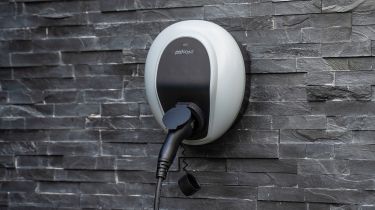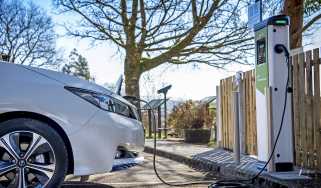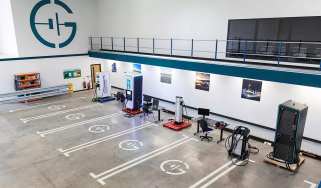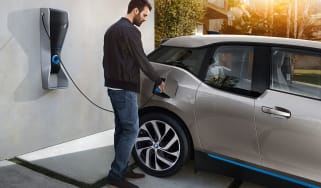Complete guide to Pod Point home chargers
All you need to know about the Pod Point Solo 3 home wallbox charger for electric and plug-in hybrid cars

Pod Point is one of the oldest and largest charging point operators that you’ll find in the UK. The company was founded back in 2009, and over that time it’s produced and installed more than 222,000 plug-in hybrid and electric vehicle charging points across the UK.
The home wallbox charger offered by Pod Point is the Solo 3, which has been on sale in its current updated form since November 2021. It’s available in three power outputs – 3.6kW, 7kW and 22kW – and you can choose to have one with a built-in charging cable (tethered), or with an open plug socket for the charging cable that came with your car (untethered).
Prices including installation start from £798 for an untethered 3.6kW Solo 3, and top out at £1,799 for the tethered 22kW charger – though you’ll need three-phase electrics for one of these, which aren’t very common in UK homes. On all Solo 3s, the tethered version carries a £51 premium over the untethered charger. If you have access to dedicated off-street parking and live in either a flat or a rented property, you can also make use of a £350 saving off the price of the charger through the government’s OZEV EV chargepoint grant, but applications close for this grant on the 31st of March 2025.
As well as producing chargers for homes, workplaces and public locations, Pod Point operates its own network of rapid chargers. You’ll have probably noticed them while out and about – the British company has been rolling out charging points in Tesco supermarket car parks since 2019, for instance. Pod Point currently operates more than 9,200 charging bays across the country, with 2,500 charging points in Tescos alone.

Pod Point Solo 3 home wallbox charger
The Solo 3 charger is the only home charger Pod Point makes, but as we mentioned there are several versions available. You can choose from either a 3.6kW setup, a mid-range 7kW charger or the most powerful one at 22kW.
In order to run that most-powerful 22kW Solo 3, though, you’ll need a three-phase electricity supply, which many UK households do not have. Be sure to find out whether or not you have a three-phase power supply before committing to a 22kW charger. The easiest way to find out would be to check your main fuse box and if you have three main fuses then it is likely that you have three-phase power, but always talk to your electrician to check for certain.
Speed aside, there are other ways in which you can tailor the Solo 3 for your needs. You can choose to have a tethered unit, which you plug into your electric car using the attached cable, or an untethered one with a Type 2 socket that you access by lifting a flap. Like most other home chargers, the Solo 3 can be mounted onto a wall, though if this isn’t practical for you, Pod Point also sells a free-standing mount for the Solo 3.

All versions are wi-fi-enabled, which allows over-the-air software updates for the life of the Solo 3, while also giving access to data from the charger in Pod Point’s smartphone app. Once you’ve entered your energy tariff’s rates, the app can also display the cost and amount of energy used during each charging session. If you lose wi-fi connection the charger will still operate but you will lose access to the smart features available.
The Pod Point app can be used to schedule when your charging sessions begin, too. If you have a dual-rate energy tariff, this allows you to make the most of the off-peak energy prices and help top-up your EV or PHEV for less.
Every Solo 3 comes with a three-year warranty, but you can currently upgrade to a five-year warranty at no extra cost. This upgrade, previously priced at £99, is now complimentary. Additionally, the price of a 'standard' installation is included in the total cost. Pod Point says 90% of its customers qualify for standard installation, but you may have to pay extra if installing a charging point at your property turns out to be more complex. Needing additional work is more common on older houses that may need electrical system upgrades to allow the chargers to function correctly.
Pod Point will perform a remote survey before your installation and carry out a more thorough survey when the installer arrives, then once the survey is complete PodPoint say that most standard installations can be completed in as little as two hours.
A number of accessories are offered, including extended charging cables, cable bags, plug holsters, and a key lock if you’re concerned about unauthorised use of your charger. For more information on home chargers, read our guide to finding the right wallbox for you here.
Recommended

The UK’s fastest electric car charger is live, but it’s too fast for most EVs

UK EV charging network grows by 47 per cent this year

Gridserve’s new lab aims to boost electric car charging point reliability
Most Popular

EV Deal of the Day: Dacia Spring is amazingly good value at £116 per month



